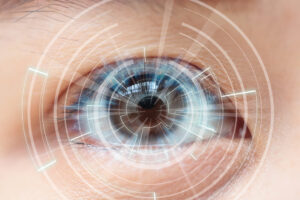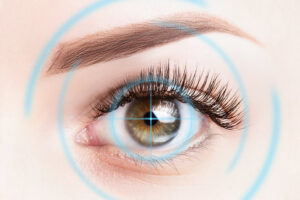
If you’ve researched at least a few options for vision correction procedures, then chances are, LASIK eye surgery was among the first things you’ve encountered.
Truth be told, a lot of people are getting laser vision correction procedures, and all-laser LASIK is an immensely popular choice with a high success rate and minimum post-op downtime. It’s safe, it’s performed in a comfortable environment, and in the hand of an experienced LASIK surgeon (such as our very own Dr. Steven Stetson), laser-sharp vision is almost guaranteed.
And even though LASIK is a type of eye surgery that can correct a few vision problems, it might not be suitable for every patient and every vision problem. As a matter of fact, there are a lot of misconceptions about LASIK surgery, and in this article, the expert team at Diamond Vision compiled all the vital info about what LASIK can treat.
So, without further ado, let’s get started.
About LASIK Eye Surgery

LASIK is a type of eye surgery that’s a refractive procedure using lasers to address vision problems. LASIK surgeons generally perform the intervention as an outpatient procedure, which enables patients to go home the same day they’ve had the surgery.
As hinted above, LASIK aims to correct several refractive errors which occur when the eye can’t bend (refract) the light as it should, leading to problems with blurry vision. LASIK can help eliminate these refractive problems, enabling patients to see better and have sharper vision.
All in all, LASIK eye surgery is an excellent treatment for those who don’t want to wear corrective eyewear like glasses and contacts anymore. For the most part, LASIK can grant that visual freedom, but in some cases, patients may need to wear their contacts and glasses, but only in specific situations, like during night drives or while reading.
What Does LASIK Eye Do?
The name LASIK itself derives from the phrase “laser-assisted in situ keratomileusis.” The “in situ” means in position, while the word “keratomileusis” means reshaping the cornea in the medical jargon. In essence, this type of eye surgery changes the cornea’s shape and improves how external light hits the retina, allowing the patient to see more clearly.
The cornea is the dome-shaped outermost layer of the human eye, made of clear tissue. It works in conjunction with the eye’s lens, bending external light before it reaches the retina, which lines the back of the human eye. When light hits the retina, it sends signals to the brain creating the images you see.
In order to see an object clearly, the human eye needs all of these parts to work harmoniously together. It can be best compared to an assembly line, where the cornea is the person in charge of making the first step in the production process. If the retina makes a mistake, the entire process gets thrown off the tracks, damaging the outcome.
As such, problems with the cornea’s shape can prevent the light from correctly traveling to the retina, causing blurry vision. On that end, LASIK eye surgery reshapes the cornea, allowing the light to reach the retina on the proper path.
So, what are the conditions LASIK can and cannot correct? Let’s see.
Conditions That LASIK Surgery Can Correct
As mentioned above, this type of eye surgery corrects the eye’s refractive problems. It’s essential to know that refractive errors aren’t eye diseases but rather issues that are based on how some people’s eyes are structured and shaped.
As such, LASIK surgeons can treat the following conditions with the procedure:
Myopia
Myopia is a highly prevalent vision issue that has been on the rise for several decades now. The condition is probably more widely known as nearsightedness. It occurs when patients can see near but have problems seeing things that are far away sharply. You have problems with myopia if your contacts and glasses come with a minus (-) prescription.
Myopia can be effectively treated both with PRK or LASIK eye surgery.
Hyperopia
The opposite of myopia, hyperopia, is farsightedness. This happens when patients can see objects far away clearly but have problems seeing them near. Approximately 25% of the population has this condition and have a plus (+) contact or eyeglass prescription.
Just like in the case of nearsightedness, LASIK and PRK can correct hyperopia.
Presbyopia
This is the expected loss of near-focus of the eye that comes naturally as people age. For most patients, the symptoms become prevalent after age 40, and it can be frustrating, especially for those with no previous vision problems. Fortunately, LASIK is a highly effective surgical procedure to correct the issues associated with presbyopia by creating monovision, eliminating the need for wearing reading glasses.
Astigmatism
This condition will usually cause blurry vision regardless of distance. Some people think that LASIK surgery is unable to address this refractive problem. The truth is that it can. To learn how you can always contact Diamond Vision’s friendly staff and schedule an appointment with our experts.
Conditions LASIK Cannot Correct

Now, let’s talk about the problems that won’t be able to be addressed with the help of LASIK eye surgery.
Cataract
These are typically found in older patients, making their visions foggy or cloudy. Cataract isare a disease that affects the eye’s lens, so LASIK won’t be able to correct the problem. Patients with cataracts should be monitored by a cataract expert, who can determine when it would be appropriate to perform cataract surgery. And if vision correction is still needed after the intervention, LASIK may be an option.
Glaucoma
This issue can be best described as a group of diseases that damage the eye’s optic nerve, leading to vision loss and even potential blindness.
Still, if detected and treated early, patients can avoid serious complications. And while LASIK surgery might not be an effective method to treat glaucoma, other treatments can effectively treat the issue. Once the condition is under control, and further vision improvements are needed, LASIK may be an option. Still, you should keep in mind that LASIK won’t treat glaucoma but improves vision.
Amblyopia
Also called lazy eye, this eye disease is related to the eye muscles and mainly affects children. LASIK may still be used when somebody has amblyopia, but it won’t solve the lazy eye itself. It will, however, allow the patient to reach their best-corrected vision. At the same time, they will still need to continue wearing their contacts or glasses.
Keratoconus
This is a disease in which the cornea bulges out like a cone and becomes thinner, bringing light out of focus and resulting in distorted and blurry vision. Treating this problem with LASIK may only worsen the situation; instead, other treatment methods should be used to address the issue.
Are You Considering LASIK?
As you’ve read from this article, LASIK effectively treats astigmatism, presbyopia, and far- and nearsightedness. Still, before opting for the procedure, it’s essential to get evaluated by an experienced LASIK surgeon, as several factors make someone a good or unfit LASIK candidate.
To see whether you qualify for LASIK, feel free to reach out to our friendly staff. You will also be able to learn even more about the procedure and its benefits.
Contact Us
If you have more questions about LASIK procedures, get in touch with us.
Related Blogs

Timing is Everything: When to Consider LASIK After Nursing for Optimal Results
Timing is everything when considering LASIK eye surgery after nursing, and understanding the optimal period for this procedure is vital for both mother and baby.

Cataract Surgery: Restoring Clarity and Confidence
Cataract surgery is a transformative procedure that offers a new lease on clear vision and renewed confidence. As cataracts cloud the eye’s lens, causing blurred

Intralase LASIK Explained: What to Expect Before, During, and After the Procedure
Intralase LASIK is a cutting-edge procedure that offers a safe, effective, and precise way to enhance vision compared to traditional LASIK methods. Understanding what to
